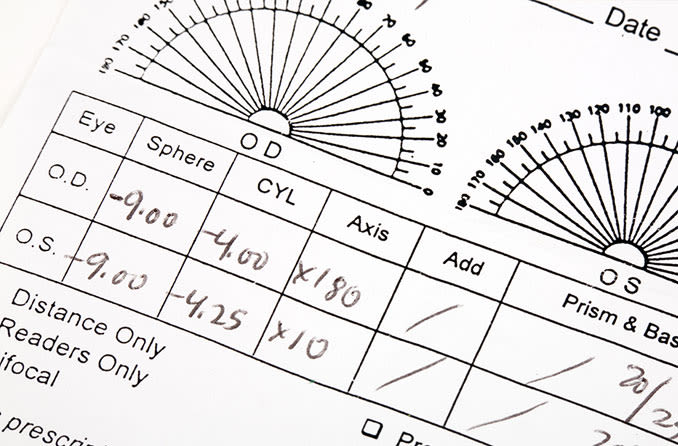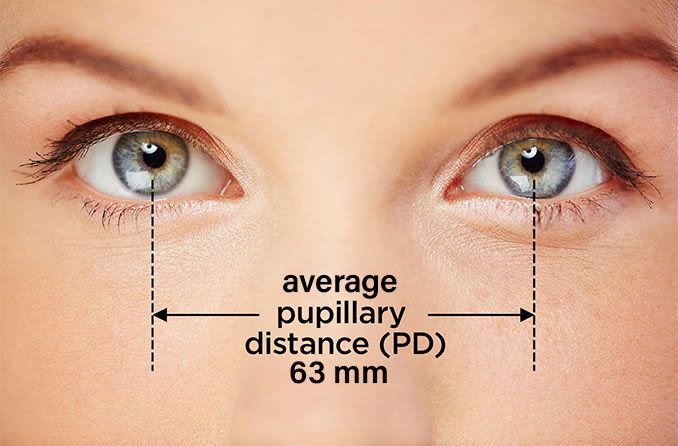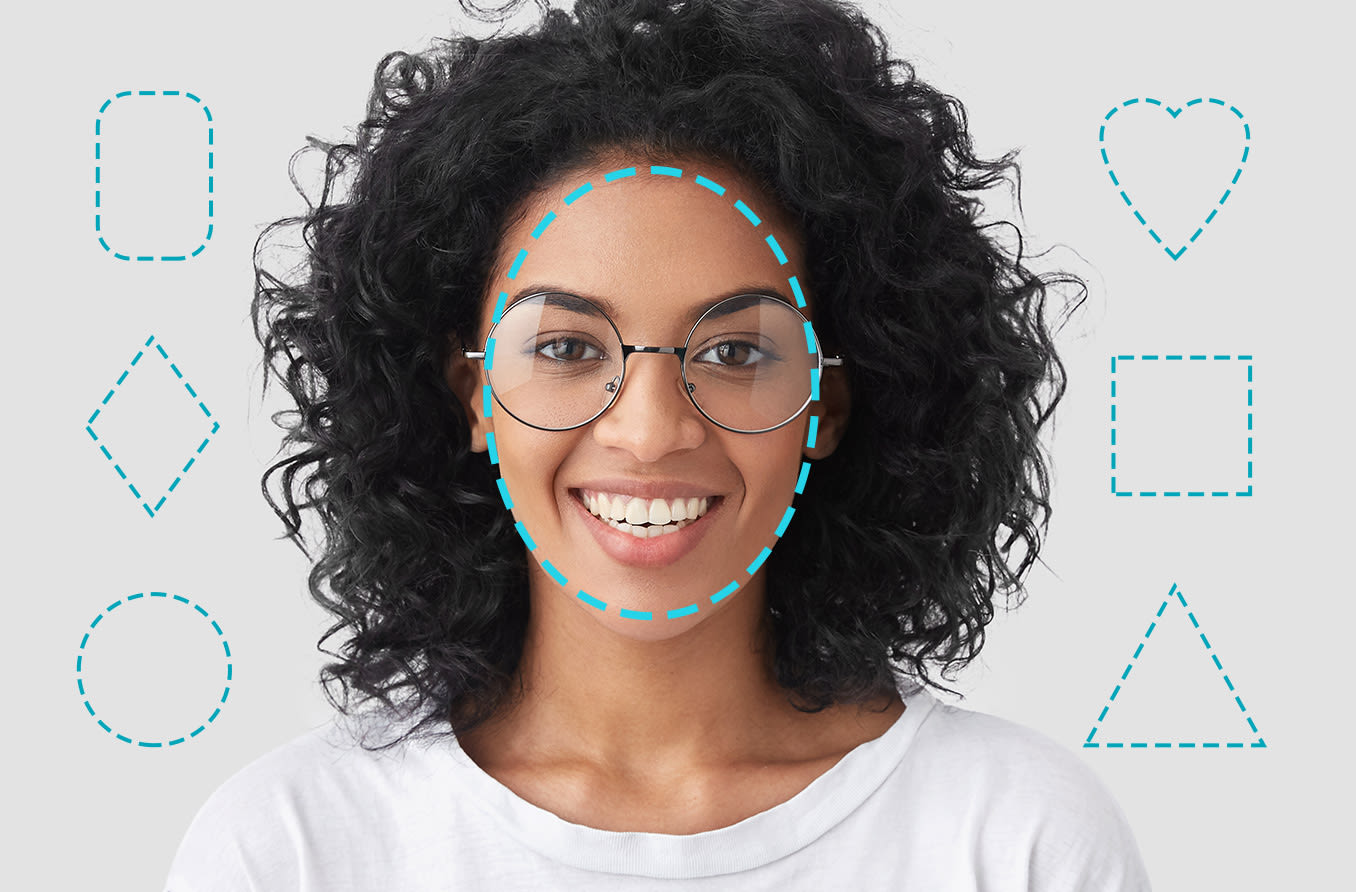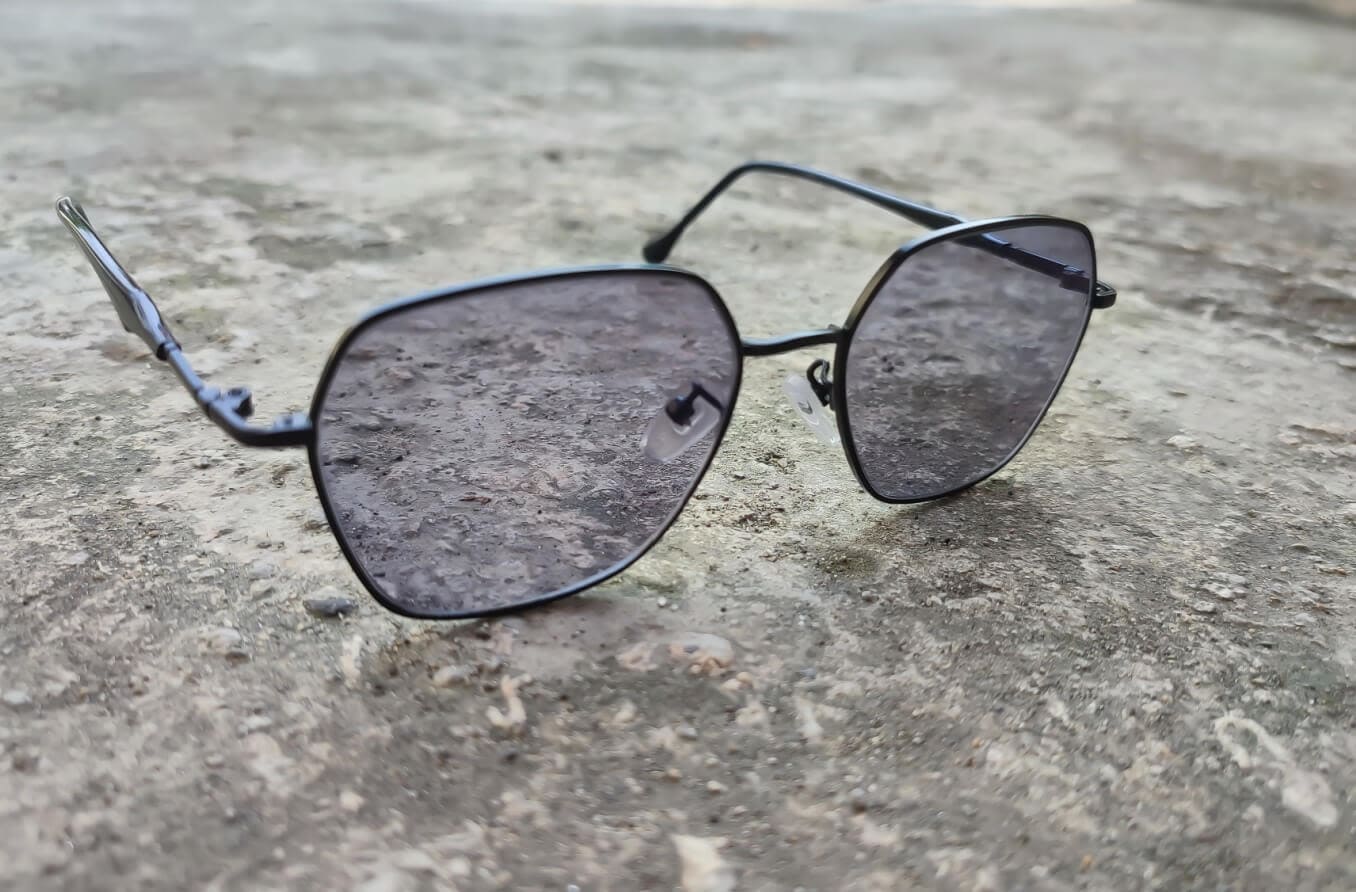How to buy glasses online
Buying glasses online is easier than ever, with many affordable options available. But before you buy, there are a few factors to consider. Be sure to have your eye prescription ready and look for reputable retailers with clear return policies, reliable warranties and responsive customer service.
Many online optical stores now provide virtual try-on features, which can help you find the best fit and style. With the right retailer, you can shop confidently and enjoy the convenience of ordering glasses from the comfort of your home.
Tips for buying prescription glasses online
The following factors can help you choose a pair of glasses that’s stylish, comfortable and right for your vision needs.
Get your prescription
You’ll need an up-to-date glasses prescription from a licensed optometrist or ophthalmologist before ordering glasses online. Practitioners in the United States are required by law to provide patients with a clearly written eyeglasses prescription. This should be given to you at no additional charge.
A glasses prescription typically lasts one to two years, although this can vary from state to state. After that, you’ll need an eye exam to get an updated prescription.
Find your pupillary distance
You’ll also need to know your pupillary distance (PD) before buying prescription glasses online. This is the amount of space between the centers of your pupils (the black circles in the middle of your eyes). Your PD is used to help make sure your lenses are properly aligned for clear vision. This might not always appear on your prescription, so you may need to measure it yourself.
Follow these easy steps to determine your PD on your own:
- Position yourself about 18 inches from a mirror.
- Place a millimeter ruler below your eyes, with the numbers facing outward.
- Shut your left eye and align the 0 mark with the middle of your right pupil.
- Switch eyes, closing your right eye and opening your left. Keep the ruler in place.
- Read the millimeter number that aligns with the middle of your left pupil. This number is your pupillary distance.
Determine segment or pupil height (for bifocals or progressives)
If you’re ordering bifocal or progressive lenses online, you’ll likely need to know your segment or pupil height. This measurement determines where the reading or progressive portion of the lens begins so it aligns correctly with your eyes.
It’s important to note that segment height varies from frame to frame. If you don’t have your new frames yet, you can use a pair of glasses you already own that fit you well to help estimate this measurement.
Follow these steps to determine segment or pupil height:
- Choose a pair of current glasses that sit straight on your face.
- Put on your glasses and look straight ahead into a mirror.
- Mark the segment or pupil height:
- For bifocals, mark the top of your lower eyelid.
- For progressives, mark the center of your pupil.
- Take off the glasses and draw a line straight through the dot.
- Double-check the height:
- For bifocals, you should see above the line when looking straight and below it when reading.
- For progressives, you should be looking through the line when standing.
- Record the measurement for each eye from the line to the bottom of the lens.
NOTE: While this method can give you a general estimate of segment height, you’ll always achieve better visual acuity and comfort when your eyewear is measured and fitted in person by a trained professional. Buying bifocals and progressives online may not deliver the same precision and clarity you’d get from an in-person fitting.
Choose a reputable online retailer
Choosing a trustworthy online retailer can help ensure you receive high-quality eyewear and have a smooth shopping experience. Key factors to look for include:
- Price – When shopping, keep your budget in mind. Some retailers, such as EyeBuyDirect, offer frequent discounts to help you get the most value for your money.
- Variety – Look for retailers that offer a wide selection of eyeglasses. This can help you find the ones that best fit your vision needs and style preferences.
- Return policy – Make sure any online retailer you buy from has a fair return policy. For instance, if you’re unhappy with the clarity or fit of your glasses after wearing them for a week, you should have the option to return them.
- Virtual try-on – If you’re unsure how well a particular glasses style might suit your face, pick a retailer that offers virtual try-on options, such as Glasses.com and FramesDirect.
Pick your frames
Choose your glasses frames based on your face shape and style. Online retailers provide a wide range of options. You can pick from bold square frames, classic round styles, chic cat-eye designs, sleek oval shapes, timeless aviators and more.
Utilizing the virtual try-on features also allows you to “try out” glasses frames before buying them online. All you need is a digital device with a built-in camera to see how different styles look on your face in real-time.
Some retailers, such as Warby Parker, even offer home try-on programs that allow you to pick frames to test out at home. You can try on several styles to see which ones feel right. Then, choose the pair that looks best before making your final decision.
Select your lenses
There are several different lens options to choose from, depending on your vision needs and lifestyle. Be sure to consider the lens types and materials offered, as well as any special features you may require for your prescription lenses.
Lens type
The type of lens you select will likely depend on the level of vision correction you need. Some lens types include:
- Single-vision lenses – Help improve close-up or distance vision to correct myopia (nearsightedness), hyperopia (farsightedness) or presbyopia (age-related blurry vision)
- Bifocal lenses – Enhance vision for both reading close-up and seeing far away
- Progressive lenses – Provide vision correction for multiple distances. These are similar to bifocals but without the distinct line that divides the focus areas.
Lens materials
The lens material you choose may depend on your glasses prescription and daily activities. A few common options include:
- Plastic lenses – Offer a lightweight option that is often more affordable
- Polycarbonate lenses – Provide durability and can be ideal for sports, as they can filter out ultraviolet (UV) rays
- High-index lenses – Made out of thin, plastic material. These can be ideal for individuals with strong prescriptions who want to avoid overly thick lenses.
Lens features
Along with lens type and material, consider any special features you want in your glasses, such as:
- Anti-reflective coating – Minimizes glare to improve vision, especially during nighttime driving
- UV protective coating – Helps protect against harmful ultraviolet rays. Some plastic lenses may naturally have this feature without the need for an additional coating.
- Scratch-resistant coating – Makes eyeglass lenses less prone to scratching. This can be especially beneficial for polycarbonate and high-index lenses, which are softer and more likely to scratch.
- Photochromic lenses – Adjust their tint automatically depending on the lighting, darkening when exposed to sunlight. Transitions is a popular brand of photochromic lenses.
- Blue-light filtering – Reduces blue-light exposure, such as from digital devices
LEARN MORE: Choosing the best lenses for your glasses
Place your order
Before placing your order for your glasses online, you’ll need to upload your eye prescription. Make sure your eye measurements are up-to-date and include all necessary information. You should also review your shipping options and costs before checkout, as they can vary between retailers and locations.
Upload your prescription
Uploading your measurements is typically straightforward, but it can vary depending on the store. Common options for uploading include:
- Entering your prescription manually – With this option, you will enter your details exactly as they appear on your written prescription.
- Upload a photo of your prescription – Some retailers offer the ability to take a photo of your prescription with your smart device for more convenient uploading.
- Use a saved prescription – If you’re buying from a retailer you’ve shopped with in the past, you may be able to use your saved prescription if it’s still up-to-date.
Review shipping costs
Shipping costs can vary when buying glasses online, depending on the retailer, shipping method and your location. Some online eyewear stores offer free standard shipping if your order meets a minimum price threshold. However, if your order doesn’t qualify or the retailer doesn’t offer free shipping, you might pay a flat shipping fee. On average, this ranges from $5 to $15 within the United States.
International shipping is usually more expensive, and costs can be higher based on the destination and delivery speed.
If you need your glasses quickly, expedited shipping options are often available for an additional charge. These can range from $15 to $30 or more, depending on how quickly you want your order delivered.
Be sure to review shipping details before finalizing your order to understand the costs and timelines specific to your purchase.
READ MORE: How much do glasses cost?
Where to buy glasses online: Top options
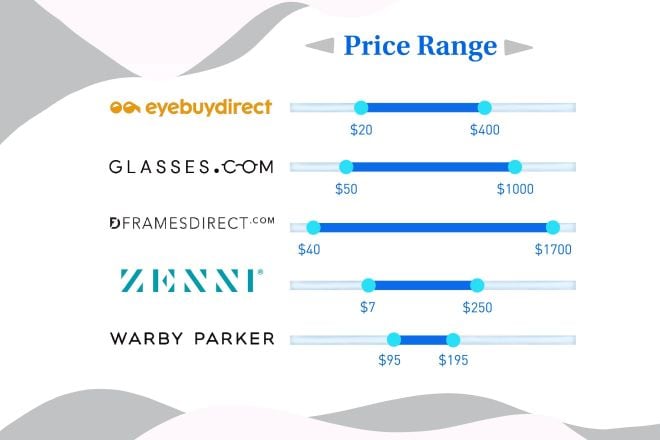
Shopping online for eyewear can be a simple, reliable way to find a pair of glasses. You can choose from many frame and lens options within a variety of price points. Here are some of the top retailers to consider:
EyeBuyDirect
EyeBuyDirect offers an array of glasses options, from budget-friendly to premium brands:
- Price – Ranging from under $20 to over $400
- Lens options – Single-vision, progressive, bifocal, readers, prism and more
- Shipping – An average of 7 to 14 business days, with 2-day delivery available
- Returns – 14-day free returns
Glasses.com
Offering a range of stylish options, Glasses.com can be a great choice for those looking for premium-quality eyewear:
- Price – Ranging from around $50 to over $1,000
- Lens options – Single-vision, progressive, non-prescription, blue-light filtering, Transitions and more
- Shipping – Up to 7 business days
- Returns – 60-day return policy
FramesDirect
FramesDirect has a large selection of over 300 brands to choose from, with a number of budget-friendly options:
- Price – Ranging from around $40 to over $1,700
- Lens options – Single-vision, progressive, high-index, Transitions and more
- Shipping – Up to 11 business days
- Returns – 30-day return policy
Zenni Optical
Zenni Optical has a large range of styles at affordable prices and features virtual try-on tools:
- Price – Ranging from around $7 to over $250
- Lens options – Single-vision, progressive, bifocal, readers, blue-light filtering, Transitions and more
- Shipping – 7 to 14 business days
- Returns – 30-day return policy
Warby Parker
Warby Parker is known for their at-home try-on program, along with fashionable frame options designed in-house:
- Price – Ranging from $95 to $195
- Lens options – Single-vision, progressive, blue-light filtering, anti-fatigue, light-responsive and more
- Shipping – Up to 10 business days
- Returns – 30-day free returns
What to look for when buying prescription glasses online
To make sure you receive high-quality prescription glasses and have a convenient experience, consider the following when shopping online:
- Frame quality – Choose durable frame materials, such as metal, alloy or titanium, or opt for a more lightweight plastic option.
- Lens quality – Pick high-quality lenses and lens coatings that fit your unique needs.
- Warranty – Evaluate the retailer’s warranty. Some offer warranties of up to one year.
- Customer service – Look for convenient customer service tools, such as 24/7 live chat and order tracking. This can allow for a more optimal customer experience.
Tips for a smooth online glasses purchase
Here are some tips to help make buying glasses online an easier and smoother process:
- Shop around – Look at several online retailers and read reviews before deciding.
- Verify your prescription – Double-check your details before placing your order.
- Use available try-on tools – Take advantage of virtual and at-home try-on tools to test out frame options.
- Look for deals – Be on the lookout for discounts and promo codes to make the most of your money.
- Maximize your benefits – Utilize a health savings account (HSA), flexible spending account (FSA) or vision insurance benefits if applicable.
Common questions about buying glasses online
When searching online for prescription eyewear, you might wonder about the reliability of the process, how long it takes or other factors. Below are some common questions about shopping for glasses online:
Is it safe to buy glasses online?
Yes, when buying from a reputable retailer, it’s generally safe to buy glasses online. However, there are a few risks to be wary of, including the potential for prescription errors. When entering your information, make sure to double-check that your prescription appears exactly as it is written.
Another factor to consider is that you won’t have an optician to check the fit of your glasses once you receive them. That's why it's important to pay attention to your return policy. This can help minimize the risk of losing money if the glasses don't fit as expected and need to be returned.
How long does shipping take?
Shipping times can differ, often depending on the retailer you select and the lens type you choose. However, the typical range is about 3 to 14 business days. Some retailers even offer free shipping or two-day delivery, so be sure to look into the various offers when shopping around.
Can I use insurance?
Some online glasses retailers take vision insurance directly, while others may offer reimbursement. Before you buy prescription glasses online, check which retailers are in-network with your vision insurance plan. This can help you determine if you can use your benefits. If a retailer is out-of-network, check with your insurance company to see if you’re still eligible for any coverage or reimbursement.
Can I use my HSA/FSA?
Depending on the retailer and your eligibility, you may be able to use an HSA or FSA account to cover the cost of prescription glasses. If you plan to use one of these accounts, be sure to choose a retailer that accepts them, such as those mentioned above.
LEARN MORE: What can I spend FSA dollars on?
Can I buy glasses online without a prescription?
You can buy glasses online without a prescription if they’re reading glasses or have plano (non-corrective) lenses. However, buying prescription glasses usually requires a valid, up-to-date vision prescription from a licensed eye care professional.
Ready to buy glasses online? Start here
Online optical retailers make it simple to find prescription glasses at a range of prices. To choose a reputable retailer, shop smart and evaluate your options. Consider factors such as shipping times, warranties and return policies.
By using these tips, you can find glasses that fit your vision needs, style and budget — and shop with confidence from the comfort of your home.

